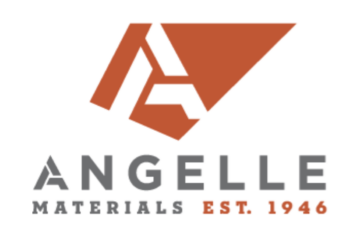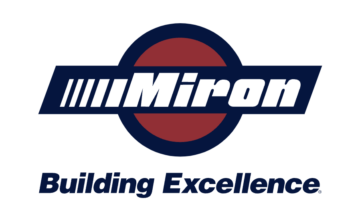Here’s our latest experience!
At our recent project, a six-story Hyatt Hotel in Ottawa, we contacted Giatec Scientific Inc. for assistance with monitoring our concrete temperatures. Giatec is a concrete sensor developer that is changing how we monitor concrete elements. These tiny “SmartRock®” sensors are tie-wrapped to the rebar prior to concrete placement with a short lead that acts as a thermocouple. The whole unit is fully embedded in the concrete, so there is no need to take care of wires or data loggers. Anyone with the SmartRock mobile app can scan the monitored area with their smartphone to obtain the real-time internal concrete temperatures. Alternatively, a SmartHub can be placed on the job site for remote monitoring of concrete data. These readings allowed us to monitor the core temperature of the concrete as we finished the panels, gave automated alerts and notifications, and ensured we did not allow the concrete to freeze.
Another benefit of using a monitor is that the temperature of the concrete can tell us the real-time compressive strength. This is achieved through testing cylinders and flexural beams to generate a maturity graph based on the ASTM C1074 standard specification. This maturity graph is often available from the ready-mix supplier. This calibration data can be easily imported into the SmartRock mobile app. The user simply scans the area and obtains the concrete temperature, and the maturity graph correlates the compressive and flexural values.
Like most, we needed proof that these digital SmartRock® sensors work with some degree of accuracy. We hired two independent CSA-certified laboratories to undertake representative concrete batch samples (both cylinders and flexural beams). We compared the measured Giatec sensor results against the concrete cylinder and beam breaks. The results were as hoped! They were within a marginal percentage of each other.
Here is the calibration curve developed by the independent testing lab. It correlates concrete maturity (the temperature-time factor) to its flexural strength for the mix that was used in our project.
To measure the flexural and compressive strength of concrete on the job site, we embedded wireless SmartRock sensors in the panels. We also placed SmartRock sensors in the field-cured cylinders to verify the accuracy of the concrete maturity method. These sensors can easily be tagged in the mobile app, and the maturity calibration curve can be assigned to them. The sensor then measures concrete temperature over time (hence concrete maturity) and calculates concrete strength in real-time. Here is an example of what our project manager and site superintendent saw on the mobile app in the field. This data helped us make informed decisions on lifting the panels and avoid delays that are inherent to testing concrete beams and cylinders in the lab.
What does this mean?
The days of field concrete cylinders and flexural beams are numbered.
We all know field cylinders and beams are not loved and cared for in the field. They are kicked around, left exposed to the elements, and generally have no mass to protect against the extreme temperatures. Without mass, the cold weather affects these slender concrete samples like our fingers without gloves. The mass concrete of panels is generating great heat, while the plastic cylinder is cold and alone within a window opening. Using the SmartRock sensors, we confirmed that the internal temperature of cylinders and beams is lower than that of the panel, even when both are covered under the same insulation tarp (at day one, for example, the beam was at 38.8 degrees Fahrenheit while the panel was 67.2 degrees Fahrenheit). This obviously results in lower strength development in the field-cured cylinder and beam compared to the actual strength of the structural element (e.g. flexural strength at day one: 189 psi in the beam but 372 psi in the panel). Do these neglected field concrete samples reflect the true strength of our mass winter-cast concrete panels? We say, “no”; and there is now an easier, more precise, cheaper solution available to us all.



